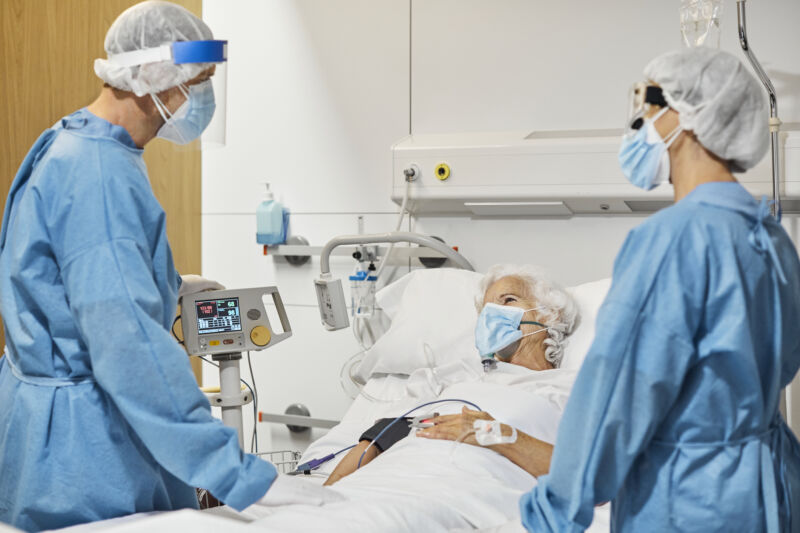
On Monday, pharmaceutical giant Pfizer released more data on its anti-COVID-19 drug, named Paxlovid. The company had released its initial data on the drug in early November, and it looked extremely promising: a drop in hospitalization and death of 89 percent in high-risk patients. But preliminary results like that don’t always hold up, as we saw with a drug from Merck. But there’s good news in this case: Paxlovid appears to be just as effective once more patients and numbers from a second trial are included.
On trial
Paxlovid inhibits a viral protein called a protease, which normally breaks chemical bonds in other viral proteins, converting them into their mature, functional forms. This processing is needed before the virus is able to copy its own genome, so inhibiting the protease should block viral reproduction.
Pfizer started at least two clinical trials with Paxlovid. One involved unvaccinated individuals who are at high risk from COVID-19 due to age or health issues. The second trial involved moderate risks: either unvaccinated individuals with no risk factors, or those who have been vaccinated but are at elevated risk. In both trials, treatments started within days of a confirmed infection.
The initial data Pfizer released last month came from an interim analysis of the high-risk trial. These are done by outside experts, who check to see whether the treatment is either causing severe problems or is clearly effective. In either case, the trial would be stopped early. In its new release, Pfizer now has additional data from the high-risk trial and initial data from the moderate-risk group.
In the high-risk group trial, there’s now data from over 2,000 participants. And the results are in line with what was seen earlier. Less than 1 percent of the people who received the drug were hospitalized, compared to 6.5 percent of the placebo control group. Nobody receiving the drug died, while nine in the placebo group did. The drug appeared roughly equally effective when administered as late as five days after symptom onset.
Overall, there was a 94 percent reduction in relative risk among those over the age of 65. There’s also evidence the drug reduced viral load, although this was a complicated analysis that’s difficult to evaluate based on the information in a press release.
Among the moderate-risk patients, data is only available on 673 participants so far. But the numbers here also look good: a 70 percent reduction in hospitalization and no deaths in the treatment group. No one died in either the treatment or placebo groups, and the rate of hospitalizations was lower in the placebo group than in the placebo group of the high-risk trial, as you’d expect.
But how do they feel?
There’s good and bad news on the more subjective measures. Reports of side effects were the good news, in that they were roughly equivalent in the treatment and placebo groups. In fact, slightly more people who received the placebo dropped out of the study due to reported side effects.
What’s less good is that Paxlovid didn’t help people feel much better. The moderate-risk trial asked patients to report if they experienced an alleviation of symptoms from their treatments and checked whether this was sustained over four days. There was no significant difference between those receiving Paxlovid and those receiving placebo by this measure.
Still, from a public health perspective, avoiding the need for hospitalization would be a very significant change, as this has the potential to reduce the strain that the health care system experiences during surges in infections. And Pfizer has already tested the drug against the variant of protease found in the omicron version of SARS-CoV-2, finding it binds to the protease effectively. The only obvious downside is that Paxlovid won’t be much help for a while, as the company doesn’t expect it will be able to produce that many doses until sometime in the new year.
